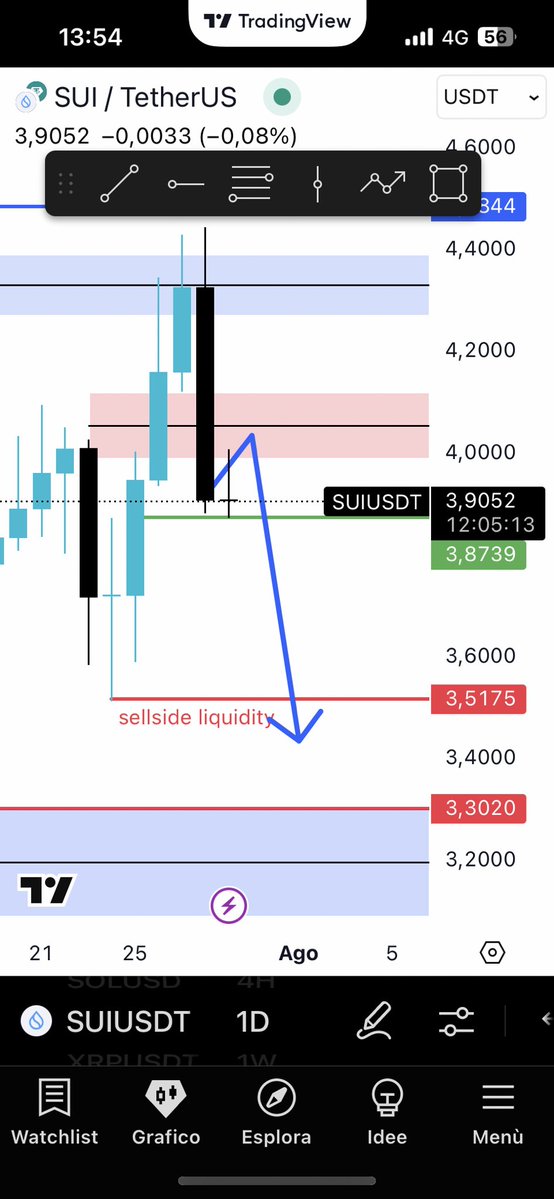Navigating the Cryptocurrency Landscape in 2025
The Current State of Cryptocurrency
Market Sentiment and Trends
The cryptocurrency market in 2025 is a whirlwind of excitement and caution. Social media platforms are abuzz with discussions about market movements, with analysts and traders sharing their insights and predictions. The sentiment is a blend of optimism and prudence. One analyst highlighted the importance of long-term goals in cryptocurrency investing, advising investors to avoid getting swayed by short-term market fluctuations that can lead to significant losses[3]. This perspective is shared by other market participants who stress the need for continuous practice and small, strategic positions to mitigate risks[4].
The market is also influenced by various external factors, including geopolitical events, regulatory changes, and technological advancements. These factors contribute to the volatility and unpredictability of the cryptocurrency landscape, making it essential for investors to stay informed and adaptable.
Key Players and Influencers
Influencers and analysts play a pivotal role in shaping market sentiment. Some analysts provide detailed technical analysis, such as harmonic patterns, to predict market movements[6]. Others focus on specific cryptocurrencies, like Dogelon Mars, discussing its potential to reach new price levels[9]. These influencers often use social media platforms to disseminate their insights, making it essential for investors to critically evaluate the information they receive.
The influence of key players extends beyond social media. Institutional investors, venture capitalists, and technology companies are increasingly involved in the cryptocurrency market, bringing both capital and expertise. Their participation adds a layer of legitimacy and stability to the market, but it also introduces new dynamics that investors must navigate.
Technical Analysis and Market Dynamics
Harmonic Patterns and Technical Indicators
Technical analysis remains a vital tool for understanding market dynamics. Harmonic patterns, such as the Butterfly Bullish pattern, are used to predict price movements with precision[6]. These patterns help traders identify potential reversal points and make informed decisions. For example, the Butterfly Bullish pattern has shown the potential for significant price increases, making it a valuable tool for traders looking to capitalize on market movements.
In addition to harmonic patterns, other technical indicators such as moving averages, relative strength index (RSI), and Bollinger Bands are widely used. These indicators provide insights into market trends, volatility, and potential entry or exit points. Traders often combine multiple indicators to gain a more comprehensive view of the market, enhancing their decision-making process.
Volatility and Risk Management
Volatility is a hallmark of the cryptocurrency market. Cryptocurrencies like Bit-tensor (TAO) are known for their significant price movements, making technical analysis essential for managing risks[10]. Traders must be prepared for both explosive rallies and sharp corrections, using technical indicators to navigate these fluctuations. Effective risk management strategies, such as setting stop-loss orders and diversifying portfolios, are crucial for mitigating potential losses.
Risk management also involves understanding the underlying factors that contribute to market volatility. Economic indicators, regulatory developments, and technological advancements can all impact cryptocurrency prices. By staying informed about these factors, investors can better anticipate market movements and adjust their strategies accordingly.
Strategic Insights for Investors
Long-Term vs. Short-Term Investing
The debate between long-term and short-term investing is ongoing in the cryptocurrency community. Long-term investors focus on the fundamental value of cryptocurrencies, aiming to hold assets through market fluctuations. This approach is often driven by the belief in the long-term potential of blockchain technology and its applications. Long-term investors may also benefit from compounding returns and reduced transaction costs.
In contrast, short-term traders seek to capitalize on price movements, using technical analysis to make quick profits. This approach requires a keen understanding of market dynamics and the ability to react quickly to changing conditions. Short-term traders often use leverage to amplify their returns, but this also increases their risk exposure.
Both strategies have their merits, and investors should consider their risk tolerance and investment goals when choosing an approach. Diversifying between long-term and short-term investments can also provide a balanced portfolio, reducing overall risk.
The Role of Education and Continuous Learning
Education is key to successful cryptocurrency investing. Continuous learning and practice are essential for staying ahead in the ever-changing market. Analysts emphasize the importance of not being fooled by misleading information and the need for thorough research and analysis[2]. Investors should also stay informed about market trends and developments, using reliable sources and expert insights to guide their decisions.
Education in cryptocurrency investing goes beyond technical analysis and market trends. Understanding the underlying technology, regulatory environment, and economic factors is crucial. Investors should also be aware of the psychological aspects of trading, such as fear and greed, which can significantly impact decision-making.
The Future of Cryptocurrency
Emerging Trends and Innovations
The cryptocurrency landscape is constantly evolving, with new trends and innovations emerging regularly. Decentralized finance (DeFi), non-fungible tokens (NFTs), and the integration of artificial intelligence (AI) are some of the areas gaining traction. These innovations present new opportunities for investors, but they also come with unique challenges and risks. Staying informed about these developments is crucial for navigating the future of cryptocurrency.
DeFi, for example, offers financial services on a blockchain, eliminating the need for traditional intermediaries. This can lead to lower costs, increased accessibility, and greater transparency. However, DeFi also introduces new risks, such as smart contract vulnerabilities and regulatory uncertainties.
NFTs, on the other hand, represent unique digital assets, such as art, music, and virtual real estate. The NFT market has seen explosive growth, with some digital assets selling for millions of dollars. However, the market is also characterized by high volatility and speculative behavior, making it a risky investment for many.
Regulatory Environment and Market Stability
Regulatory developments play a significant role in shaping the cryptocurrency market. Governments and regulatory bodies are increasingly focusing on cryptocurrencies, aiming to provide a stable and secure environment for investors. While regulations can bring stability, they can also impose restrictions that affect market dynamics. Investors should stay informed about regulatory changes and their potential impact on the market.
Regulatory environments vary significantly across different jurisdictions. Some countries have embraced cryptocurrencies, providing clear guidelines and support for the industry. Others have taken a more cautious approach, imposing strict regulations or even bans. Investors must navigate these differences, choosing jurisdictions that align with their investment strategies and risk tolerance.
Conclusion: Embracing the Future
The cryptocurrency market in 2025 is a dynamic and exciting landscape, filled with opportunities and challenges. By understanding market trends, leveraging technical analysis, and adopting strategic insights, investors can navigate this complex environment successfully. Education, continuous learning, and a long-term perspective are key to achieving success in the world of cryptocurrency. As we look to the future, embracing innovation and staying informed will be crucial for thriving in this ever-evolving market.
The future of cryptocurrency is bright, but it is also uncertain. Investors must be prepared to adapt to changing conditions, embracing new technologies and strategies as they emerge. By staying informed, educated, and adaptable, investors can position themselves to capitalize on the opportunities presented by the cryptocurrency market.











